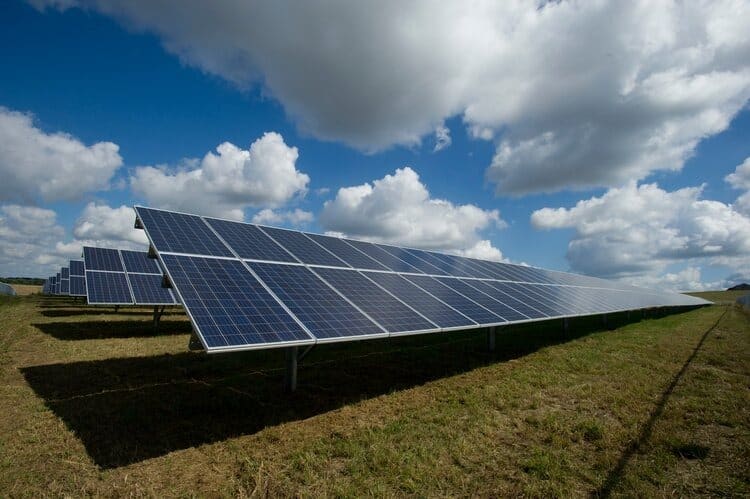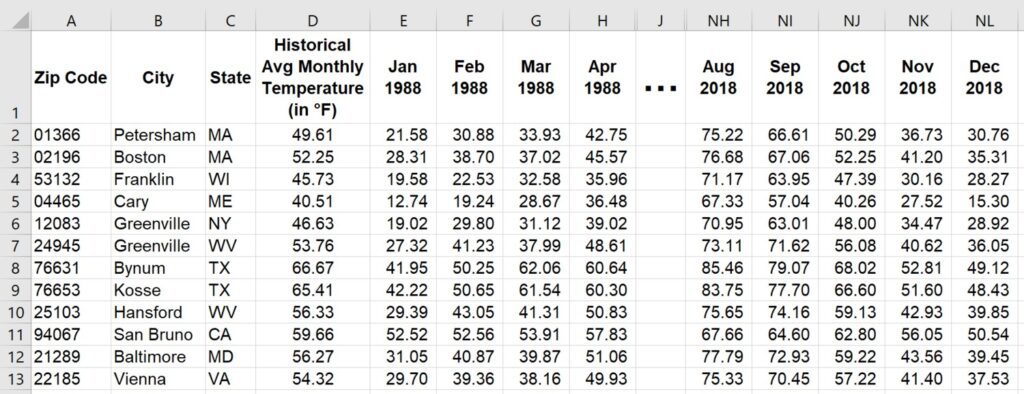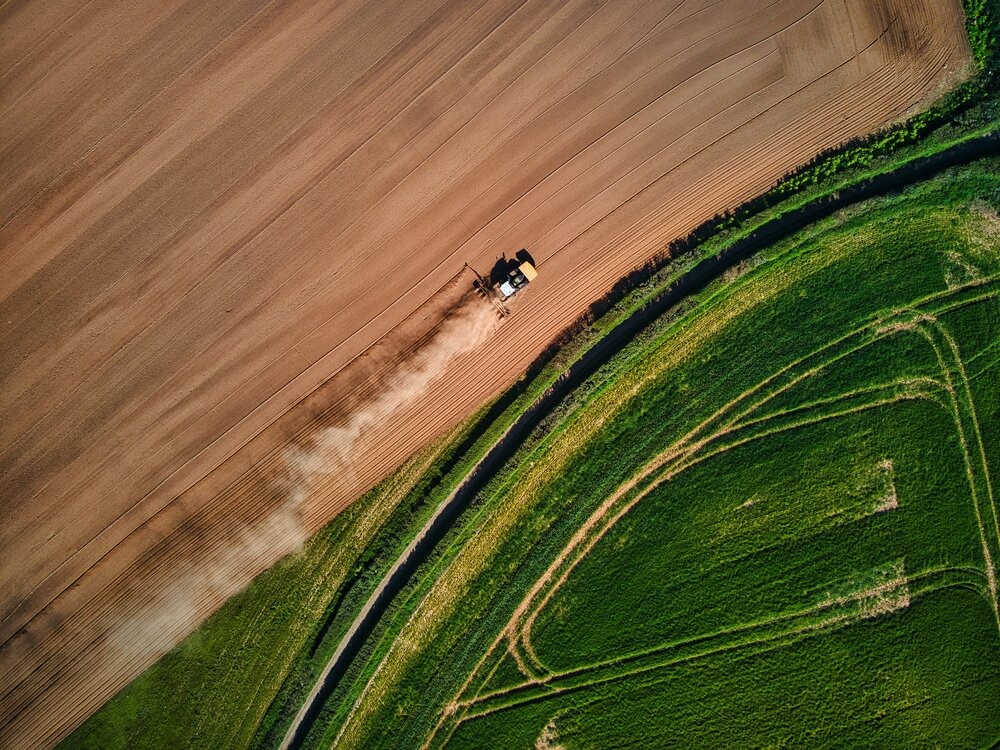As the world grapples with uncertain events and the threat of climate change looms, the role of historical weather has come into more focus. Across different industries, there is a greater need for accurate and strategic data that can help drive decision-making, mitigate risk, and something that companies can rely on to help them gain more market share.
One of the most accurate types of data that lends a lot of credence to strategy is historical weather data. Using past weather trends for forecasts can help companies plan better and gain deeper insight into market trends to reach customers better.
In this article, we’ll look at some of the major industries that benefit from past weather data and what to look for when evaluating historical climate data to ensure that you’re getting accurate data that truly offers actionable insight.
The Major Industries that Rely on Weather Data Providers
While many industries depend on historical weather data for their business, there is some nuance to this. For example, some companies rely on real-time weather data and trends to understand the market better. In contrast, others may need more in-depth data such as weather over the past five years or global weather data to forecast to plan fieldwork and other crucial planning activities. Luckily, weather data providers have made this data readily available to the public.
While each business has unique needs for the data itself, there is no denying that, as a whole, historical weather data can provide great value across different sectors. Understanding the role of weather on operations, strategy, customer demand, and resource allocation can enable strategic decision-making from a new perspective, unlocking greater value for the business overall.
We’ll now look at nine industries and the various ways businesses benefit from meteorological climate data.
Retail & Consumer Products
Weather affects retail across different points, making it a centerpiece in planning strategy. For example, weather wields great influence on the supply chain, from manufacturing to delivery to the store. And for retail stores like supermarkets and clothing stores, weather data is crucial for how and when items are stocked, and promotions are run.
Severe weather conditions can lead to delays in procuring materials in the supply chain, manufacturing itself, and how quickly items can go from warehouses to stores or customers. And even after the items arrive in-store, laying out displays and planning for customer demand does rely on seasonal data such as weather to better understand and predict customer shopping habits and plan accordingly.
Agriculture
Perhaps one of the more obvious industries, agriculture, is majorly reliant on weather conditions when it comes to precision agriculture. Weather can be a make or break factor across different parts of agriculture, from sowing crops to harvest, and an unpredictable variable when it comes to planning for yields and potential sales.
The agriculture industry must be able to access weather data to help understand where risks might be present for crop lifecycles and plan sowing and harvesting as much as possible to avoid issues with yield and ensure all produce grown can be harvested and sold. Understanding weather conditions and forecasts can also help as crops move down the supply chain from farm to retail store shelf.
For instance, climate analysis can help farmers and others in the supply chain understand how temperature may affect products and help ensure that products are stored correctly based on the temperature data. Doing so can help with reducing wastage as the products move from farm to grocery stores and other retail operations and ensure that products arrives undamaged, ready to be sold.


Tourism
Another industry where revenue and weather are inextricably tied is tourism. Tours cannot function in times of severe weather, and even with temperatures remaining stable, it can be difficult to plan and prepare customer expectations properly. If it’s too hot, tourists may opt out of activities if not warned beforehand, and similarly if it’s too cold.
Using past weather data and understanding weather trends can help plan promotions and tours and prepare customers beforehand for extreme weather. In addition, tourism companies can also use the weather data to plan for amenities and excursions suited for different seasons and help create safe schedules.
Mining
Mining is another sector where meticulous planning is needed to plan shift schedules and equipment needed. Again, looking at weather data over the years can help with predicting precarious weather situations and planning appropriately.
It can help understand when to scale back workers and when to plan extra shifts and hire more if needed. In addition, with weather disasters becoming more prevalent, accurate historical weather data can provide a small semblance of control and enable better decision-making early on.
Shipping
Shipping and logistics have into more scrutiny over the past years in the face of changing climate conditions and severe weather conditions leading to delays and delivery issues. For both B2B and B2C shipping providers, looking more closely at past weather data may hold the key to improving the shipping sector moving forward.
Understanding past trends and where there might be peaks and lows can help shipping and logistics providers plan out routes and resource allocation and preemptively plan for severe weather conditions.

Film
Always a glamorous industry, film locations are often chosen based on weather forecasts. Depending on the type of movie, films and TV scenes might need a certain look or a very specific type of location, but it makes that much more difficult for filming if the weather is unpredictable.
For example, if a beach movie is being filmed, but daily weather data shows consistently bad weather in June and improving in July, filmmakers and production crew can base their filming schedule on the prediction. That enables production companies to drastically save on costs while effectively utilizing crew and cast time. Having a deeper understanding of the weather can greatly benefit filming and ensure that production runs on track and that the location’s weather fits what is needed in the scenes being filmed.

Architecture and construction
Architecture and construction are fields where a great degree of planning is needed. From creating a timeline for the client, planning worker schedules, and allocating equipment, there is a lot to consider – and weather plays a significant role.
Historical weather data can help construction and architecture businesses plan schedules and timelines around the weather, enabling better working conditions and increased productivity.
For example, during summer days, predicting peak temperatures can help plan worker schedules and provide additional resources to ensure comfortable working schedules. If you’re not sure what to look for in a weather data provider for architecture, evaluate data for accuracy and ease of access so that you can start analyzing right away rather than having to wait.
Energy
The energy sector is also hugely reliant on the weather at multiple touchpoints. For example, the energy sector needs access to weather data to better understand how equipment and planning might be potentially disrupted by severe weather conditions and how to plan fieldwork.
Without access to detailed historical weather data, energy companies may experience more difficulties in undertaking planned work, maintenance, and set up and installation needs. In addition, certain weather conditions may also lead to increased demands from customers for certain products or services, making historical climate even more valuable in predicting that level of demand.

Aviation
Accurate and accessible weather historical data is essential for the aviation industry for several reasons. Firstly, climate data is needed to plan for safety. Secondly, to understand what routes may be most beneficial for flights as part of flight planning and other key operational measures.
Identifying weather trends that could lead to delays can help airlines avoid significant issues and create a better experience for passengers. Using historical weather data for predictions around adverse weather and temperature peaks and lows, airlines can plan flight schedules and routes with more confidence. Understanding weather patterns can also help calculate accurate flight times and offer relevant seasonal deals to passengers to gain more market share.
Events
As the event industry gets back into full swing post-pandemic, the weather has been a consistent concern. For outdoor and indoor venues, preparing for extreme temperatures, either way, is vital to ensure maximum comfort before, during, and after an event. For large and small event venues, weather data allows for more targeted measures without massively driving up costs.
Using past temperature forecasts, venues can better predict weather and plan accordingly. For example, for extreme heat, venues can better plan when to purchase supplies and materials such as fans for extra cooling. And when temperatures drop, venues can quickly get heating and other measures ready to accommodate everyone quickly. If you’d like to learn more, you can see our in-depth blog post on how event professionals can use weather data here.

Other industries that rely on accurate weather forecast data
The industries above are by no means an exhaustive list of how businesses can benefit from accurate historical weather data. In the past, we’ve done deep dives into how more unconventional types of businesses can take advantage of this type of data.
You can find our blog post on direct-to-consumer businesses that can optimize their offerings for customers, and other types of businesses, such as meal delivery kits, can strategically plan for customer demand using weather data.
Where Do These Companies Go to For Their Weather Data
Weather data reinforces the value of environmental data for insight and its ability to unlock new ways of creating a comprehensive strategy. However, it can often be difficult to find comprehensive.
However, it can be challenging to find the right source. For example, finding weather history by data and location for multiple locations using US zip codes is more challenging than we might initially think.
While there are plenty of free alternatives out there, they can be cumbersome to access and make it difficult to create multiple analyses. For instance, websites such as Farmers Almanac provide free historical data, but only for one location at a time. That can lead to a lot of manual work for companies looking for data on multiple cities.
Other alternatives may provide weather data, but again, it’s difficult to access and not exactly a user-friendly process. It can lead to a lot of frustration, especially if you have plans for complex or types of analyses – or even just trying to compare multiple cities all in one go. Other historical weather data options are subscription-based with exorbitant fees that may make it more costly in the long run, even if these subscriptions offer great functionalities.
So, where do businesses find the right data products they can use, especially for something more niche, such as weather data? Businesses can use interactive websites such as WeatherDataByZipCode.com to access large datasets of historical weather data. With one purchase, you gain access to a downloadable Excel sheet.
The Excel datasheet contains historical average temperature by zip code for all US zip codes. Additionally, you can also access each zip code’s temperature and precipitation by month, going back 10 years all in the same spreadsheet, making it simple and easy.

Using datasets like this allows for more manipulation across different types of analysis, which can lead to richer insight that can truly benefit companies. Seeing weather patterns laid out in a clear, easy way that you can analyze as needed will provide a lot of benefits. As we’ve seen in the examples above, companies can use weather data in various ways to extract insight on how to preemptively prepare for different scenarios.
Using data like this, you can also start to see patterns between weather and user behavior, allowing you to stay one step ahead of competitors and gain a larger market share by running strategic promotions based on the data.
At WeatherDataByZipCode.com, our mission is simple: Provide easy-to-use and accurate historical weather data that puts you in control. With one purchase, you’ll gain access to valuable data to help you craft strategy and gain a deeper understanding of your business and your customers. To learn more about our data and how it benefits businesses, please visit our website today.







